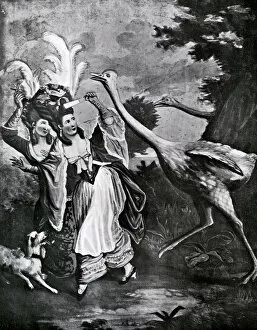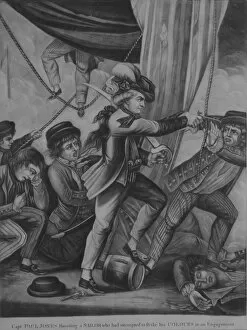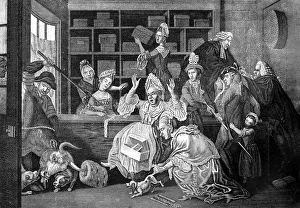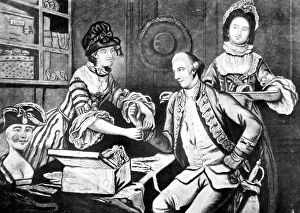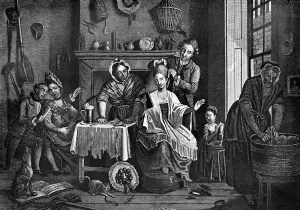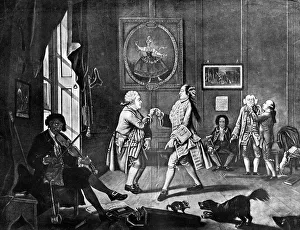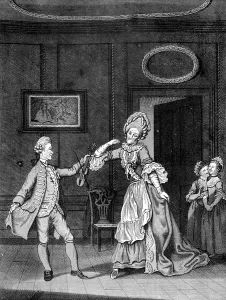John Collet Collection
John Collet was an 18th-century artist known for his captivating and satirical works
All Professionally Made to Order for Quick Shipping
John Collet was an 18th-century artist known for his captivating and satirical works. His paintings depicted various scenes from everyday life, often with a humorous twist. In "The Feathered Fair in a Fright, " Collet showcased the chaos and hilarity of a bustling fair. Another notable piece, "Capt. Paul Jones shooting a Sailor who had attempted to strike, " captured a dramatic moment at sea. Collet's art also delved into societal norms and gender roles. "A Taylor riding to Brentford" portrayed the comical sight of a tailor on horseback, while "Miss Wicket and Miss Trigger" highlighted the eccentricities of two fashionable ladies in the late 18th century. With his sharp wit, Collet explored themes such as customer service in "A Unwelcome Customer. " He also shed light on rivalries within industries through pieces like "The Rival Milliners. " Additionally, he commented on women's rights and public speaking with his painting titled "The Female Orators. " Collet didn't shy away from poking fun at social classes either. In works like "High-Life Below Stairs, " he humorously exposed the dynamics between servants and their employers. Furthermore, he playfully illustrated dance lessons for both gentlemen ("Grown Gentlemen Taught to Dance") and ladies ("Grown Ladies Taught to Dance"). One of Collet's most famous artworks is undoubtedly "The Ladies Disaster. " This painting showcased an amusing mishap during an outing, capturing both shock and amusement among its subjects. Through his detailed brushstrokes and clever storytelling abilities, John Collet left behind a legacy that continues to entertain viewers even today. His unique perspective on society provides us with valuable insights into 18th-century life while reminding us not to take ourselves too seriously.

